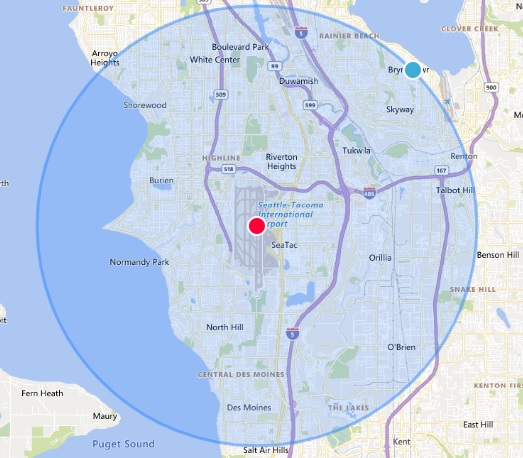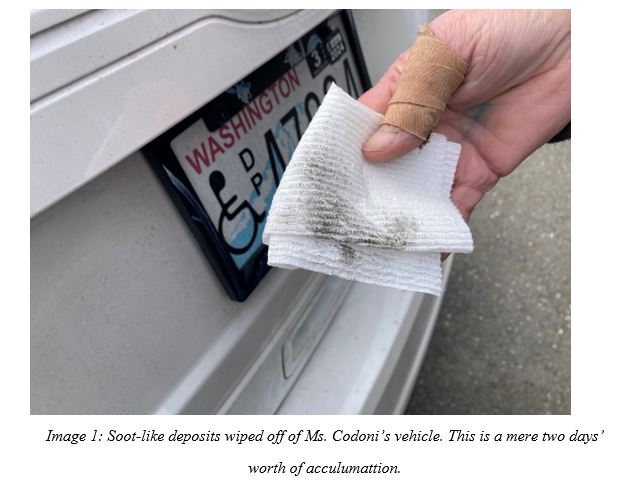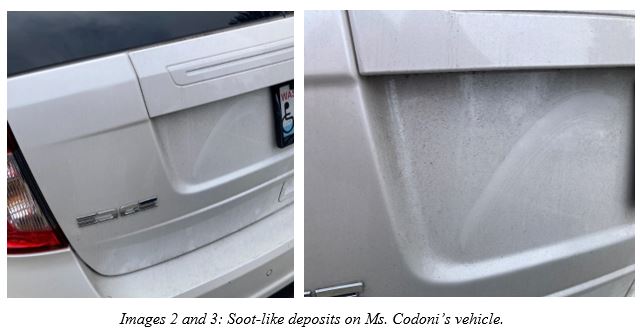Article Summary:
Do you live within a five-mile radius of Seattle-Tacoma International Airport? Fill out the form to find out your rights »
WHAT’S THE ISSUE?
Hagens Berman has filed a class-action lawsuit representing those living within a five-mile radius of Seattle-Tacoma International Airport (Sea-Tac). More than 300,000 people in this area, at least 60,000 of whom are children, have likely been exposed to unhealthy levels of toxic substances including lead and carbon monoxide from nearby airport operations. Attorneys call this the Contamination Zone, where levels of cancer, heart disease and chronic lower respiratory disease are significantly higher.
HOW DO I KNOW IF I’M AFFECTED?
Those living within a five-mile radius of Sea-Tac Airport may be impacted. Areas in the following cities are affected
- Burien
- Des Moines
- Normandy Park
- Renton
- SeaTac
- Tukwila

Residents may also be able to see the pollution. According to the lawsuit, one SeaTac resident reports that a soot-like layer of black dust perpetually blankets her property, accumulating on her car and home.
SEA-TAC AIRPORT POLLUTION EXPLAINED
Research indicates that high concentrations of pollutants, including particulate matter, dangerous gases and toxic heavy metals, are present in the air and soil in the Contamination Zone around Sea-Tac Airport. A 2019 study conducted by the University of Washington’s Environmental and Occupational Health Sciences Department observed significant levels of ultrafine particulate matter, which can cause respiratory and cardiovascular problems, in the communities below Sea-Tac Airport aircraft flight paths.
A follow-up study found notable concentrations of ultra-ultrafine particulate matter, which has been linked to central nervous system problems, in the air around schools in the Contamination Zone. A Public Health – Seattle & King County report, which analyzed over 500 studies and journal articles, concluded that airport operations resulted in air pollution including ozone, carbon monoxide and sulfur oxides, and studies of other international airports yielded evidence of high concentrations of lead and other heavy metals in surrounding soil. The soil around Sea-Tac Airport is likely similarly tainted.
Other researchers have concluded that airport emissions may have distinct “chemical fingerprints,” and attorneys say airport operations are the only plausible explanation for the unique pollutants observed in the area surrounding the airport. Area residents may have been exposed to the following toxic substances:
- Lead
- Carbon monoxide
- Benzene
- Formaldehyde
- Dangerous particulate matter
HOW POLLUTANTS FROM AIR TRAFFIC CONTAMINATE LOCAL HOMES
Planes taking off and landing at Sea-Tac Airport spew pollutants like formaldehyde and acrolein into the atmosphere. Particulate matter containing toxic chemicals can flake off airplanes during flight, raining heavy metals like lead, cadmium and barium onto the surrounding area, where the metals can settle on homes and contaminate soil.
THE CONSEQUENCES OF AIRPORT POLLUTION
People who live in the Contamination Zone may have lower life expectancies than those in surrounding areas. Prolonged exposure to the pollutants generated by airport operations can cause serious health issues, including:
- Cancer
- Cardiovascular conditions
- Respiratory conditions
- Central nervous system issues
- Reproductive issues
YOUR RIGHTS AS A WASHINGTON RESIDENT AGAINST HARMFUL POLLUTANTS
Attorneys allege that the Port of Seattle, Alaska Air Group and Delta Air Lines knew about the pollution and ignored the pleas of area residents to stop contaminating their neighborhoods and making people sick. Airline companies and the Port of Seattle, which owns Sea-Tac Airport, have a responsibility to ensure that their business practices don’t generate high levels of toxic pollutants. This is an issue of environmental justice that has a particularly negative effect on low-income and minority populations. The Port of Seattle, Alaska Air Group and Delta Air Lines must be held accountable.
Our Seattle-based law firm cares deeply about the community we call home. Hagens Berman is ready to take a stand to protect our affected neighbors.
HOW CAN A CLASS-ACTION LAWSUIT HELP?
Through a class-action lawsuit, individual private citizens can collectively bring claims against those who would otherwise ignore the complaints of individual citizens. A class-action lawsuit seeks to level the playing field, bringing strength to collective action to change harmful practices. You will be covered by the class action should the court approve it as such, but if you wish to help please contact us.
TOP CIVIL & HUMAN RIGHTS LAW FIRM
Hagens Berman is one of the most successful plaintiff litigation law firms in the U.S. and has achieved settlements valued at more than $325 billion for clients in lawsuits against some of the world’s largest entities for wrongdoing and negligence. The firm has extensive experience fighting for clean air for local populations, and successfully pursued a lawsuit against grass farmers in Idaho for business practices which created air pollution and serious health problems for area residents.
CASE TIMELINE
Hagens Berman purchases advertisements on search engines, social media sites and other websites. Transmission of the information contained or available through this website is not intended to create, and receipt does not constitute, an attorney-client relationship. If you seek legal advice or representation by Hagens Berman, you must first enter a formal agreement. All information contained in any transmission is confidential and Hagens Berman agrees to protect information against unauthorized use, publication or disclosure. This site is regulated by the Washington Rules of Professional Conduct.


